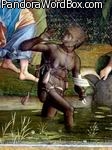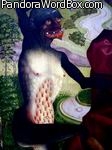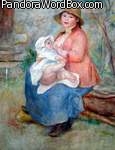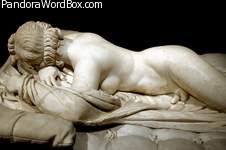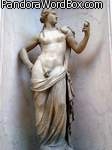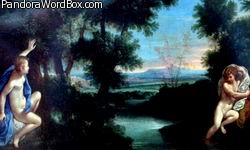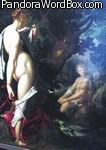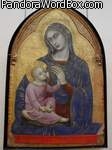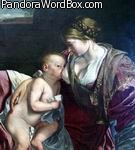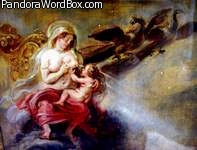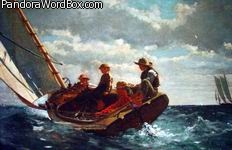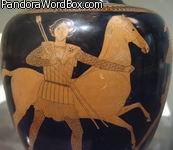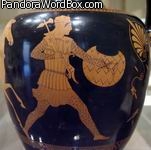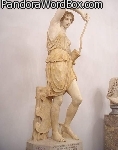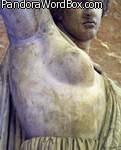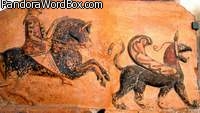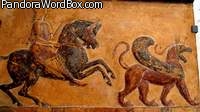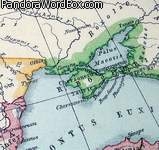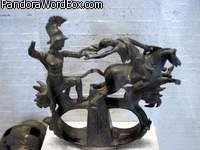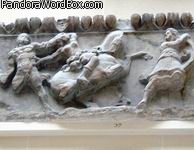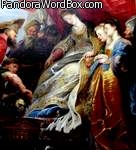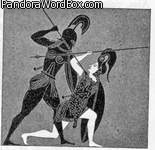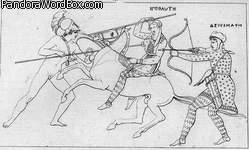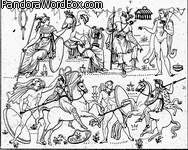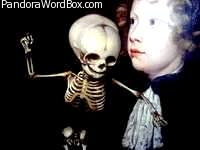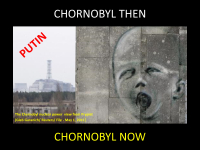Our websites offer information mostly for educational purposes with no intent to alter health care protocols nor to serve as a sole source of medical information.
Always seek the advice of your local health care provider.
|
× UKRAINIAN CHILDREN WITH DISABILITIES HAVE SPECIAL NEEDS |
MASTECTOMY or Breast or Mama, Mamma, Mother, Mammary, Mammal
Gynecomastia - points towad Thele or Thelos, as in Mammary and Thelarchy
Mast Mast-cell point toward Fat, Lipids, Food, Breast, Mammary, Nipple, Birth , Milk and the Milky Way
Amazing Amazons point toward California and Amazonia
This illustrated overview has to do with MAST or BREAST, in the sense of FATTY or LIPID liquid called MILK. By extension, these are inherent with meanings in a-maze-ing a-MAZONS.
MAST has roots from Greek and other languages and conveys several implications, mostly concerned with breast, fat, food and control, or standing, as evident in related terms: MASTAX, MAEST, MASTICAR, MORDER, MASLO, MORDA in Greek, old English, Spanish, and Ukrainian convey ideas related to mouth, food, mastication, mandible, chewing, bite, butter or lard and snout. In biology MAST cells are characterized by a cytoplasm with fatty or lipid droplets. MAST and MASTER add to the array a sense of standing and status.
MAST, in the sense of breast, is complemented by THEL, THELE, and THELOS, Greek for woman, birth and nipple.
THELALGIA means a painful nipple. THELOCIA refers to parthenogenic birth. THELYPTHORIA denotes "corruption of females", from PTHIEIEN, meaning for decay. PHTHISIS or ptisis is later used to describe tuberculosis.
Demons often were represented as having abnormal number or positions of Nipples and Breasts.
Infants with "extra" nipple and breasts are relatively common and formerly, religious fanatics demanded their destruction along with their mothers since their "explanation" was that they were offspring of the Devil or Demons. Women with "polythelia" or "extra" nipples or breasts were also often destroyed.
Infants with "extra" nipple and breasts are relatively common and formerly, religious fanatics demanded their destruction along with their mothers since their "explanation" was that they were offspring of the Devil or Demons. Women with "polythelia" or "extra" nipples or breasts were also often destroyed.
The presence of ATHELIA is a cause of AMASTIA (the breast may not develop). This is a rather rare type of agenesis and BIRTH DEFECT. More common are infants with POLYTHELIA, which with puberty may evolve into POLYMASTIA. Note: in non-human mammals polymastia is normal. In humans, for the most part, polythelia and polymastia are biologic ATAVISMS of unknown medical significance. An ATAVIC character can be described as "a feature of the past that is foreign to the present".
It is "normal" or the "norm" for women (GYNOs) to develop natural "GYNECOMASTIA", a fact well known by GYNECHOlogists. Men may also develop GYNECOMASTIA and such instances are considered an abnormal feminization of male breasts.
MASTITIS, or breast inflammations, are mostly due to infections, complicating the LACTation or breast feeding of infants. Such events open another path pointing toward ideas implicit in suck, succulent, suckle, nurse, nourish and NUTRITION, NATURE, and NURTURE.
MAST also points to the mythical "galactic or lactic way". For many in India, this is the way of Shiva.
MASTECTOMY, or resection of a mammary gland, is mostly performed to remove NEOPLASTIC tissues characteristic of CANCER (a disorder of considerable GRAVIDITY). Enlarging breasts is an early sign of GRAVIDITY or pregnancy. The number of pregnancies and deliveries, referred to as PARITY, is known to lower the risk for maternal breast cancer. GRAVID women are heavier and, in former times, faced the danger of dying during delivery and ending in a GRAVE. In modern times, the main reason for women to end in a GRAVE is not GRAVIDITY, but instances when MASTECTOMY fails to remove a breast cancer.
MAST can also denote "to stand". Many women seek SURGICAL help to restore fallen breasts to their former "standing", and undergo "MASTO-PLASTY". Such "plastic" services are given by surgeons who MASTERED "THELO-PLASTY". MAST is also found in MASTODONT and MASTOID to stress "breast like shapes". MASTODONT refers to a MAMMOTH extinct elephant-like mammal. MASTOID also refers to a bony prominence formed by the pull of the sterno-cleido-mastoid muscle on the occipital bone of the skull. The contraction of the muscle approximates the area behind the ear toward the collar bone. Note that molar teeth had "nipple-like" prominences.
Amazons wore pants and were expert equestrians
who nurtured their feminine charms and sported long hair.
In mythology, there are rooted stories of brave women who were allies of Troy. Amazons fought several wars against the Greeks. The name AMAZON technically implies "lacking one MAST or breast", a term found in legends suggesting that these women underwent a left MASTECTOMY to enable them to better handle a bow and arrow. Yet, note that ancient Greeks artists do not portray the Amazons as non-mutilated paragons of beauty. Instead, they depict them with both breasts along with all of their other considerable charms.
Experts say that AMAZE and AMAZON have distinct roots. Apparently, AMAZE relates to MAZE in the sense of "loss of sense". Even if this is so, it is a fact that the beauty of AMAZONS AMAZED the Greeks. Their heroes such as Achilles and Pentheus were dazzled by the beauty of Penthesilea and Hippolyta, or Antiope. Along with the Greeks, King Cyrus of Persia also lost his head due to the Amazons (see the story of the Amazon Queen Thomyris and King Cyrus).
The amazement with Amazons was perpetuated by chivalric romances. The story about the Amazon CALIFIA in " Amadis de Gaula" was probably the most popular work in the times of Cervantes, who wrote commentaries about it. This Amazon queen had an army of GRIFFINS, or hybrid birds, with beaks of eagles and bodies of lions.
It is postulated that Spanish "conquistadores" knew of the story of CALIFIA, as did many other prominent Spaniards of those times. Experts have proposed that when Hernando Cortez was dazzled by the beauty of the west coast of America in 1535, he named those shores CALIFO-RNIA. His companion Juan Paez states in his journal of 1542, "... We came in sight of CALIFORNIA ...", and a map of 1562 applies this name to the region. The same applies to Francisco de Orellana, who encountered fascinating natives living along the banks of an enormous and beautiful river he named AMAZON.
The history of the AMAZONS starts in mythic times. Their lands were inherited by the Scythians, Sarmatians, Tatars, Turks, Russians, Bolsheviks, and the USSR. Today, their lands are what is now modern Ukraine.
Today, the seal of Sympheropil, the capital of Crimea, Ukraine, sports a GRIFFIN, a mythic animal from whom flow ideas found in GRAPH, GRAFT, GRAPE, GRAFFITI, and so on.
Amazons were independent women who preferred death to slavery, who rode horses and wore slacks much before men did (an essential garmet for EQUESTRIANS), who emphasized their feminine charms, and who kept their hair long with disregard to the risks posed in battle. Such bravery and charm lends to such legends and memories an indelible place in human arts and poetry as illustrated below.
In Greek mythology, the admiration for the Amazons was widespread and included the Goddess Diana or Artemis, who admired the Amazon queen Camilla. Perhaps, just perhaps, the valor and values of the Amazons prompted the Greeks to represent JUSTICE as a WOMAN standing for EQUITY. Be this as it may, nowadays, any woman with the attributes represented by the Amazons would not be someone who would acquiesce to injustice, nor represent someone who is an anti-feminist or masculinized female.
20100518 ww






